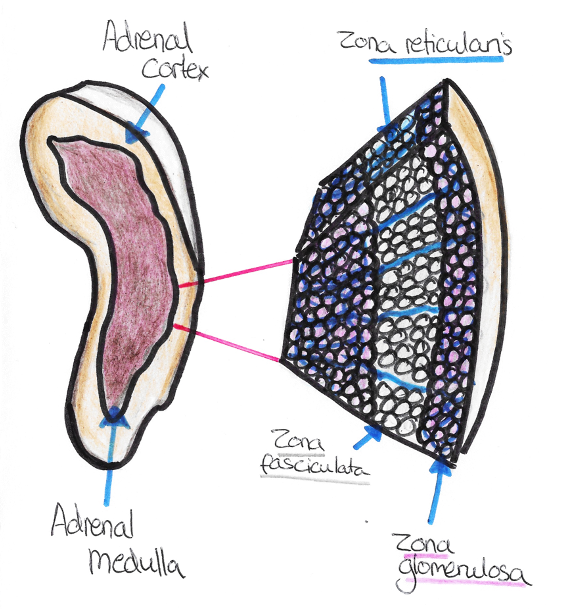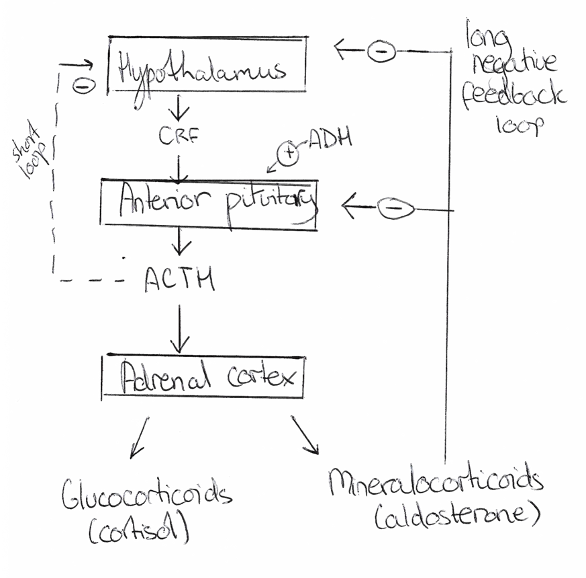The adrenal gland is split into the adrenal medulla and the cortex, which itself is subdivided into 3 sections.
The glands are found above the kidneys and are supplied by superior, middle and inferior adrenal arteries.
Medulla
This is at the centre of each adrenal gland.
– Made up of chromaffin cells producing noradrenaline (20%) and
adrenaline (80%)
– Driven by sympathetic preganglionic fibres which synapse in medulla
– Considered a specialised sympathetic ganglion which releases
secretions into the blood.

Cortex
This is the outermost layer of the adrenal gland which is split into 3 zones:
i) Zona glomerulosa
This is the outermost zone of the adrenal cortex.
– This is responsible for the production of aldosterone, a mineralocorticoid, which is made by the enzyme aldosterone synthase.
– This is part of the renin-angiotensin system and acts to increase blood pressure by increasing reabsorption of sodium from the kidneys.
ii) Zona fasciculata
This is situated between the zona glomerulosa and reticularis.
– It is the largest layer of the adrenal cortex.
– Responsible for producing glucocorticoids like cortisol through the HPA axis.
iii) Zona reticularis
This is the innermost layer of the adrenal cortex, which produces precursor androgens including DHEA and androstenedione from cholesterol.
– These precursors can be converted in the adrenal cortex or are released into the blood stream where they are taken up by testes/ovaries and made into testosterone and estrogen.
– ACTH partially regulates adrenal androgen secretion and so is seen as a permissive factor.

Cortisol
Cortisol synthesis is stimulated by the release of corticotrophin-releasing factor from the hypothalamus.
– Stimulates production of ACTH from anterior pituitary gland
– This acts on the adrenal cortex to directly stimulate cortisol synthesis and some mineralocorticoid release.
Cortisol exerts its effects by binding the glucocorticoid receptor within nuclei and causing transcription of specific genes.
Metabolic actions:
i) Counters insulin – increases gluconeogenesis and decreases uptake by fat/muscle increasing blood glucose
ii) Increases protein breakdown and reduces protein synthesis
Immune Actions:
i) Decreases T and B cell proliferation
ii) Decreases production of inflammatory cytokines IL-12 and TNFa
iii) Increases production of anti-inflammatory cytokines IL-10
iv) Switches from Th1 –> Th2 response
Other actions:
Cortisol also changes one’s mood and suppresses reproductive function.
– Inhibits bone formation and collagen synthesis in the skin and stimulates gastric acid secretion
Because the steroid has these actions, prolonged exposure to steroids has a number of side effects.

